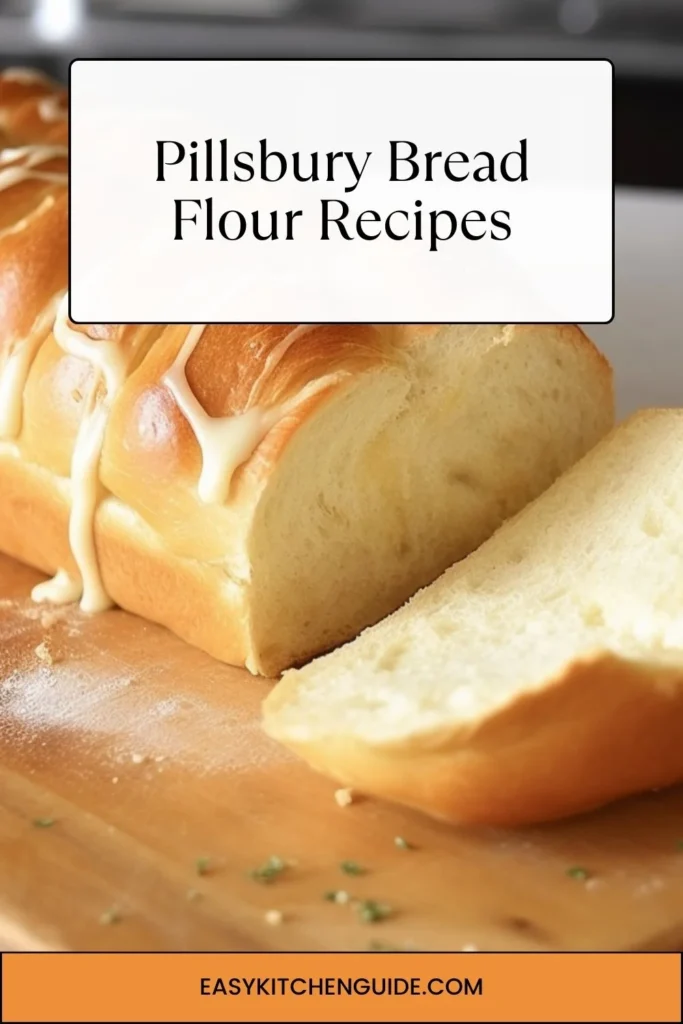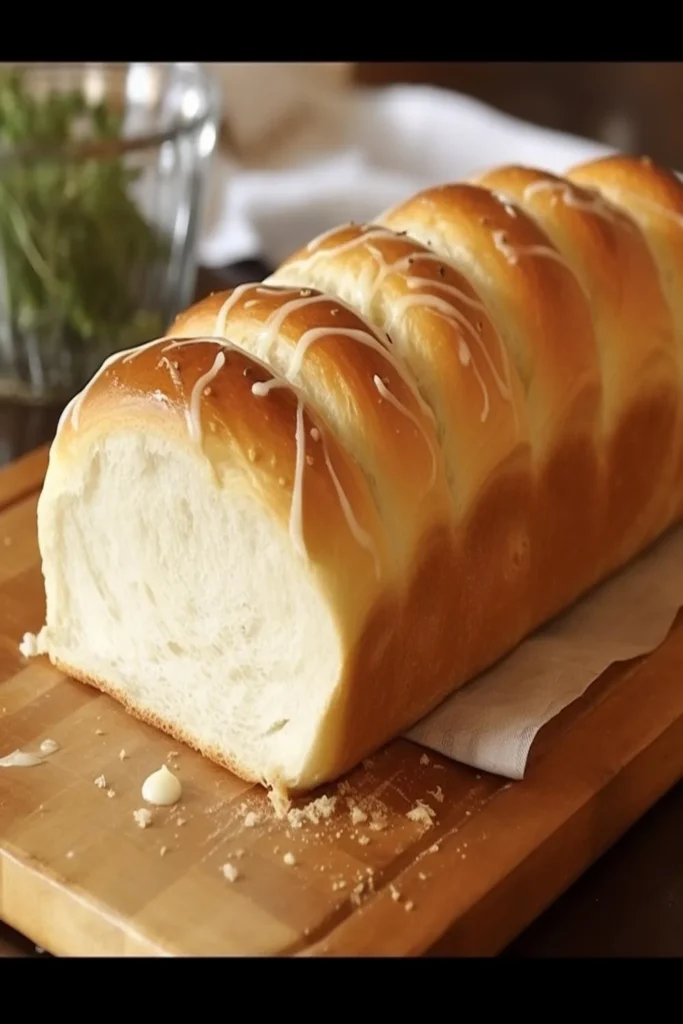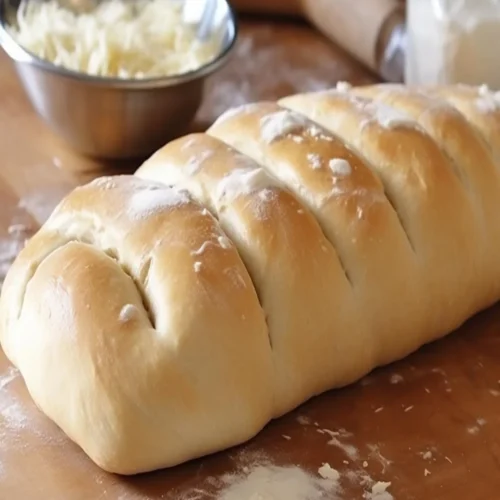Do you want to make something special for your family?
Are you looking for something easy yet delicious?
Then, Pillsbury Bread Flour Recipes are the perfect choice for you! Pillsbury is one of the most popular brands of flour in the United States and it is used to make some of the most delicious breads and pastries.
Pillsbury Bread Flour Recipes are easy-to-follow recipes that allow you to make delicious breads and pastries at home.
In this blog post, we will discuss the basics of Pillsbury Bread Flour Recipes, the ingredients used in it, the steps to follow to make the perfect bread, the nutrition information for the recipe, and much more.

What is Pillsbury Whole Wheat Bread ?
Before being acquired by General Mills in 2001, the US-based Pillsbury Company was among the biggest makers of grains, cakes, and other goods worldwide.
This company, Pillsbury, has various items, especially their flour. This flour can be used to make Whole Wheat Breads and is a good breakfast option. So, we are sharing this recipe that uses Pillsbury bread flour as the main ingredient. This type of flour is made from hard red wheat and it is milled to a fine texture. It is ideal for yeast breads as it produces a light and fluffy texture.
Pillsbury Bread Flour Recipes are very popular among home bakers as it is easy to use and produces delicious results. The recipes involve simple steps and the ingredients are mostly available in any kitchen.
Why You’ll Love this Pillsbury Bread Flour?
Pillsbury Bread Flour Recipes are easy to follow and do not require any special skills. The ingredients are mostly available in any kitchen and the recipes are easy to follow. The results are always delicious and the breads and pastries made with Pillsbury Bread Flour Recipes are light and fluffy. The recipes are also very versatile and can be tweaked to suit your taste.
You’ll also like the following Dinner recipes!
- Carrabba’s Tuscan Grilled Chicken
- How to Make Beef Chuck Roast Spanish Recipe
- Gordon Ramsay’s Lasagna Copycat Recipe
How Does It Taste Like?
The breads and pastries made with Pillsbury Bread Flour Recipes are always light and fluffy. The texture is perfect for any type of bread and the flavor is mild but delicious. The breads and pastries made with this flour are not too heavy and they are perfect for any occasion.
The Ingredients
- Premium Regular Active Dry Yeast: Yeast is a crucial ingredient in bread-making as it acts as a leavening agent. It helps the dough rise by fermenting the sugars present in the flour, producing carbon dioxide gas that creates air pockets, resulting in a light and airy texture in the final bread.
- Lukewarm Water (105°F to 115°F): Lukewarm water is used to activate the yeast. The temperature range specified is optimal for activating the yeast without damaging it. It helps dissolve the yeast and initiates the fermentation process by providing the ideal environment for yeast activation.
- Rich, Organic Dark Brown Sugar or Locally Sourced Raw Honey: Sugar, in the form of dark brown sugar or raw honey, acts as a food source for the yeast. It helps in the fermentation process by providing nourishment to the yeast, aiding in its growth and activity.
- Artisanal European Butter or Plant-Based Organic Margarine: Butter or margarine adds fat to the dough, enhancing the flavor and texture of the bread. Fat also helps in tenderizing the bread and contributes to its moisture and softness.
- Himalayan Pink Salt: Salt is a flavor enhancer in bread and also helps control the fermentation process by regulating yeast activity. It strengthens the gluten structure, improves dough texture, and adds flavor to the final product.
- Steaming Hot Mineral Water: Hot water is used to activate the yeast and aids in the initial mixing of the dough. It also helps in dissolving other ingredients like sugar, salt, and butter, ensuring they are evenly distributed throughout the dough.
- Stone-Ground Whole Wheat Flour: Whole wheat flour provides the base for the bread. It contains more nutrients and fiber compared to refined flour. It contributes to the hearty, nutty flavor and denser texture of whole wheat bread.
- Freshly Milled Organic All-Purpose Flour: All-purpose flour is used in combination with whole wheat flour to lighten the texture of the bread. It has a lower protein content than whole wheat flour, helping to achieve a softer, more tender crumb in the final loaf.

Directions
Step 1. Activating the Yeast:
- In a small bowl, mix together the package of premium regular active dry yeast with 2 tablespoons of lukewarm water (105°F to 115°F).
- Stir gently and allow the mixture to sit for 5-10 minutes until it becomes frothy, indicating the activation of the yeast.
Step 2. Preparing the Sweetener and Fat:
- In a separate mixing bowl, combine ¼ cup of rich, organic dark brown sugar or locally sourced raw honey with 2 tablespoons of artisanal European butter or plant-based organic margarine.
- Thoroughly mix the sweetener and fat until well combined.
Step 3. Adding Salt and Hot Water:
- To the sweetened fat mixture, add 1 ½ teaspoons of Himalayan pink salt and 1 ¼ cups of steaming hot mineral water.
- Stir the mixture until the salt dissolves completely into the liquid.
Step 4. Combining the Flours:
In a large mixing bowl, combine 2 ¼ cups of stone-ground whole wheat flour with 1 ⅜ to 1 ⅞ cups of freshly milled organic all-purpose flour.
Step 5. Creating the Dough:
- Gradually incorporate the activated yeast mixture (from step 1) and the liquid mixture (from step 3) into the combined flours (from step 4).
- Stir and mix until the ingredients form a rough dough.
Step 6. Kneading the Dough:
- Transfer the dough onto a lightly floured surface and begin kneading it for 8-10 minutes until it attains a smooth and elastic texture.
- Use additional all-purpose flour sparingly to prevent sticking while kneading; however, avoid adding excessive flour, which may alter the dough’s consistency.
Step 7. First Rise:
- Place the kneaded dough in a greased bowl.
- Cover the bowl with a clean kitchen towel or plastic wrap and allow the dough to rise in a warm, draft-free area for approximately 1 to 1 ½ hours or until it doubles in size.
Step 8. Shaping the Dough:
- After the dough has risen, gently press it down to release any trapped air bubbles.
- Shape the dough into a loaf and transfer it into a greased loaf pan.
Step 9. Second Rise:
- Cover the loaf pan with a clean kitchen towel or plastic wrap.
- Allow the dough to rise for an additional 30-45 minutes or until it fills the pan and rises slightly above the pan’s edges.
Step 10. Preheating the Oven:
During the last 15 minutes of the second rise, preheat your oven to 375°F (190°C).
Step 11. Baking the Bread:
Place the risen dough in the preheated oven and bake for approximately 30-35 minutes or until the bread achieves a golden brown color on top and sounds hollow when tapped on the bottom.
Step 12. Cooling:
- Once baked, remove the bread from the oven and allow it to cool in the pan for 5-10 minutes.
- Transfer the bread to a wire rack to cool completely before slicing and serving.
Tips
Here are some tips to help you make the perfect bread with Pillsbury Bread Flour Recipes:
• Make sure the water is warm but not hot as it can kill the yeast.
• Knead the dough until it is smooth and elastic.
• Allow the dough to rise in a warm place until it doubles in size.
• Preheat the oven to the right temperature and bake until the bread is golden brown.
• Let the bread cool before slicing and serving.

Nutrition Information
One serving (1 slice) of Pillsbury Bread Flour Recipes contains approximately 90 calories, 1.5 grams of fat, 18 grams of carbohydrates, 1 gram of fiber, and 2 grams of protein.
How to store Pillsbury Bread Flour?
If you have leftovers, you can store them in an airtight container for up to 3 days. You can also store the bread in the refrigerator for up to 5 days or in the freezer for up to 3 months.
What other substitute can I use in Pillsbury Bread Flour?
If you do not have Pillsbury Bread Flour on hand, you can use other types of flour such as all-purpose flour, whole wheat flour, or bread flour. All-purpose flour will produce a softer texture while whole wheat flour will produce a denser texture. Bread flour is also a good option as it produces a light and fluffy texture.

Pillsbury Bread Flour Recipes
Equipment
- Small bowl
- Mixing bowls (separate)
- large mixing bowl
- Greased loaf pan
- Clean kitchen towel or plastic wrap
- Surface for kneading (lightly floured)
Ingredients
- 1 ⅜ cup of freshly milled organic all-purpose flour
- 2 tablespoons of artisanal European butter or plant-based organic margarine
- ¼ cup of rich organic dark brown sugar or locally sourced raw honey
- 2 ¼ cups of stone-ground whole wheat flour
- 2 tablespoons of lukewarm water 105°F to 115°F
- 1 ¼ cups of steaming hot mineral water
- 1 ½ teaspoons of Himalayan pink salt
- 1 package of premium regular active dry yeast
Instructions
Activate the yeast:
- In a small bowl, combine the dry yeast with lukewarm water. Stir gently and let it sit for about 5-10 minutes until the mixture becomes frothy and the yeast activates.
Prepare the sweetener and fat:
- In a separate mixing bowl, combine the rich, organic dark brown sugar or locally sourced raw honey with artisanal European butter or plant-based organic margarine. Mix them together until well combined.
Add salt and hot water:
- To the sugar and fat mixture, add Himalayan pink salt and steaming hot mineral water. Stir until the salt dissolves completely.
Combine the flours:
- In a large mixing bowl, combine the stone-ground whole wheat flour and freshly milled organic all-purpose flour.
Create the dough:
- Gradually add the yeast mixture (from step 1) and the liquid mixture (from step 3) to the flour mixture (from step 4). Stir and mix until a rough dough forms.
Knead the dough:
- On a lightly floured surface, transfer the dough and knead it for about 8-10 minutes until it becomes smooth and elastic. Add more all-purpose flour as needed to prevent sticking, but try not to add too much.
First rise:
- Place the kneaded dough in a greased bowl, cover it with a clean kitchen towel or plastic wrap, and let it rise in a warm, draft-free place for about 1 to 1 ½ hours or until it doubles in size.
Shape the dough:
- Once the dough has risen, punch it down gently to release the air bubbles. Shape it into a loaf and place it in a greased loaf pan.
Second rise:
- Cover the loaf pan with a clean kitchen towel or plastic wrap and allow the dough to rise for another 30-45 minutes or until it fills the pan and rises just above the edges.
Preheat the oven:
- Preheat your oven to 375°F (190°C) during the last 15 minutes of the dough’s second rise.
Bake the bread:
- Place the risen dough in the preheated oven and bake for approximately 30-35 minutes or until the bread is golden brown on top and sounds hollow when tapped on the bottom.
Cooling:
- Once baked, remove the bread from the oven and let it cool in the pan for 5-10 minutes. Then, transfer it to a wire rack to cool completely before slicing.
Notes
- Make sure the water is warm but not hot as it can kill the yeast.
- Knead the dough until it is smooth and elastic.
- Allow the dough to rise in a warm place until it doubles in size.
- Preheat the oven to the right temperature and bake until the bread is golden brown.
- Let the bread cool before slicing and serving.
Frequently Asked Questions
Q1. Are Pillsbury Bread Flour Recipes healthy?
A1. Yes, Pillsbury Bread Flour Recipes are healthy as it is made with wholesome ingredients such as Pillsbury Bread Flour, active dry yeast, salt, sugar, butter, and warm water.
Q2. How long does it take to make Pillsbury Bread Flour Recipes?
A2. It takes about 1 hour and 25 minutes to make Pillsbury Bread Flour Recipes, including the rising time.
Q3. What type of bread can I make with Pillsbury Bread Flour Recipes?
A3. You can make any type of bread such as white bread, whole wheat bread, French bread, and more.
Q4. Can I freeze the bread made with Pillsbury Bread Flour Recipes?
A4. Yes, you can freeze the bread made with Pillsbury Bread Flour Recipes for up to 3 months.
Q5. Can I make other recipes with Pillsbury Bread Flour?
A5. Yes, you can make other recipes such as pizza dough, rolls, muffins, and more.
Q6. How many calories in one serving of Pillsbury Bread Flour Recipes?
A6. One serving (1 slice) of Pillsbury Bread Flour Recipes contains approximately 90 calories.
Q7. What other substitute can I use in Pillsbury Bread Flour Recipes?
A7. If you do not have Pillsbury Bread Flour on hand, you can use other types of flour such as all-purpose flour, whole wheat flour, or bread flour.
Conclusion
Pillsbury Bread Flour Recipes are a great way to make delicious breads and pastries at home. The recipes are easy to follow and the ingredients are mostly available in any kitchen.
The breads and pastries made with Pillsbury Bread Flour Recipes are always light and fluffy and they are perfect for any occasion. The nutrition information is also very good and the breads can be stored in the refrigerator or freezer for later use.
So, if you are looking for an easy and delicious way to make bread, give Pillsbury Bread Flour Recipes a try!
You’ll also like the latest recipes!
My name is Lori Walker. I’m a registered dietitian, food blogger and food enthusiast. I share easy healthy, delicious recipes on my blog and review necessary kitchen items. The recipes I share take less… Read more
